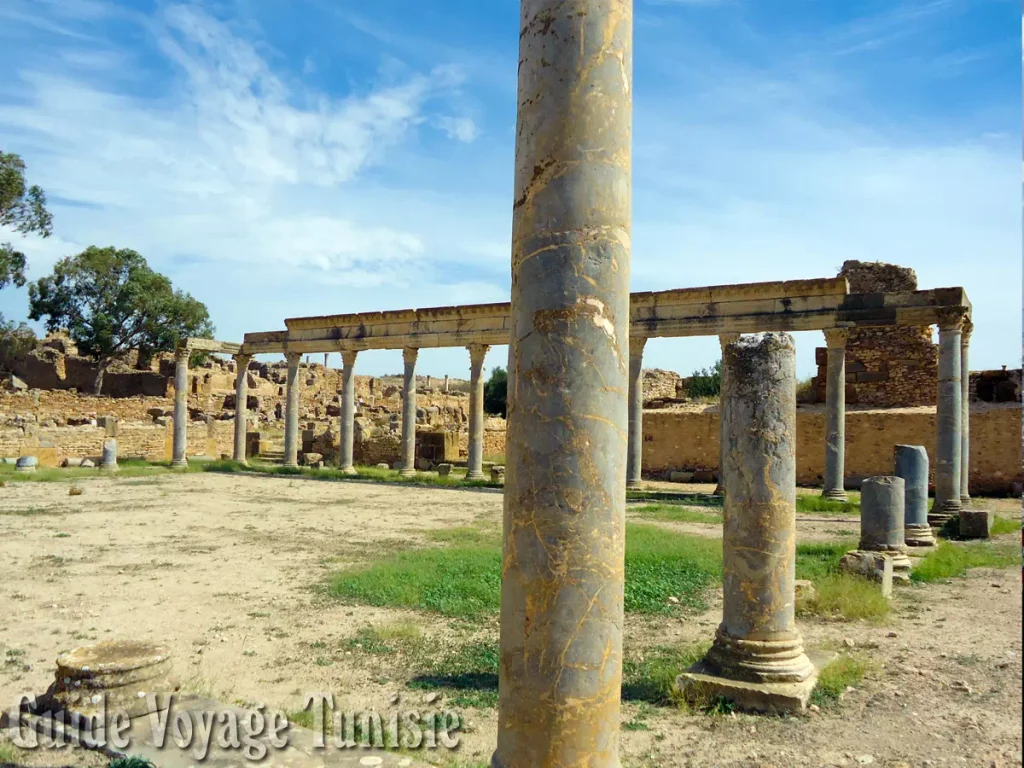Thuburbo Majus Archaeological Site
Thuburbo Majus Archaeological Site is located in northern Tunisia, about sixty kilometers south-west of Tunis, near the current city of El Fahs. Its ruins can be admired from the banks of the Oued Miliane at Henchir Kasbat.
Identified in the middle of the 19th century, the excavations there remained incomplete despite several campaigns which delivered important material deposited in the Bardo National Museum, in particular mosaics and the fragments of a colossal statue of Jupiter.
Due to these unfinished excavations, despite important remains, in particular those of the Capitol, a large part of the forty hectares of the site remains to be cleared.
And yet, Thuburbo is the third largest archaeological site in the region of Tunis, Utica and Carthage. Its imposing buildings like its mosaics, most of which were transported to the Bardot Museum in Tunis, testify to the importance of this provincial metropolis of Berber origin whose founding date is unknown.
The city of Thuburbo-majus, existed before the arrival of the Romans, it was before Berber then Carthaginian. During Roman times, this city experienced prosperity especially in 128 when it received the status of municipality following the visit of Emperor Hadrian. This site experienced a decline in the middle of the 3rd century before a brilliant revival in the 4th century, leading it to proclaim itself Respublica Felix Thuburbo-Majus. The Vandal invasion, in the middle of the 5th century, put an end to the prosperity of the city and brought it back to the rank of a town which, after the Arab conquest, was soon deserted.
The site, totally abandoned during the Byzantine period, was rediscovered only in 1857 by Charles Tissot and its ruins were not updated and restored until 1912 thanks to the excavation work of A. Merlin and L. Poinsot . The site is quite large, about 40 hectares. Partially excavated, it is “padded” with numerous buildings, most of them monumental, such as the capitol, with its 6 columns in front and two in back 8.50m high and 0.85cm in diameter; or the temple of Peace and that of Mercury, the temple of Caelestis, patroness of the city, that of Cérès, transformed into a basilica in the 4th century, the summer and winter baths, not to mention the market, the district residential.
Thuburbo Majus in pictures

